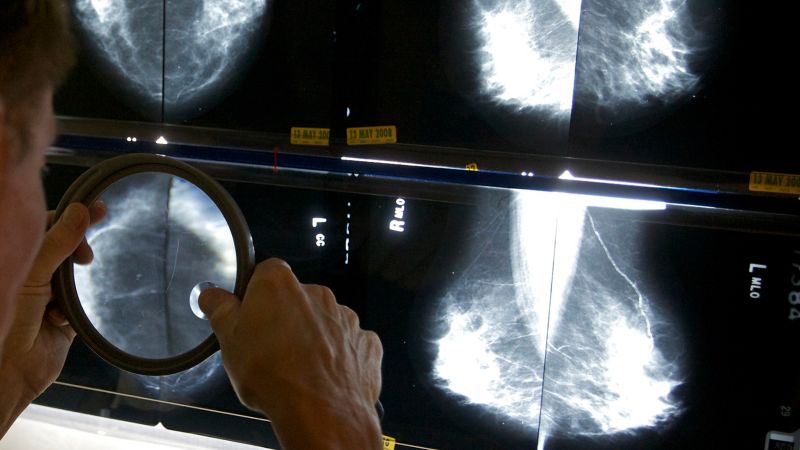CNN
—
New updates to US Food and Drug Administration mammography regulations require mammography facilities to notify patients about the density of their breasts.
The changes “reflect advances in mammography technology and processes,” the agency said in a fact sheet about the medical imaging, and will strengthen the FDA’s oversight and enforcement while helping physicians better assess and categorize mammograms.
“Today’s action represents the agency’s broader commitment to support innovation to prevent, detect and treat cancer,” said Dr. Hilary Marston, FDA’s chief medical officer.
One of the key updates requires facilities to inform patients about their breast density.
Dense breast tissue, which refers to breasts composed of more fibroglandular tissue than fatty tissue, is a normal and common finding present in about half of women undergoing mammograms.
Dense breast tissue shows up as white on a mammogram, making cancer – which also appears white – more difficult to detect, according to the American Cancer Society. Dense breasts are also associated with up to a four times higher risk of developing breast cancer. But research shows that few women recognize breast density as a risk factor for breast cancer.
Thirty-eight states currently mandate that women receive written notification about their breast density and its potential breast cancer risk following mammography; however, the language varies and does not always require providers to notify a patient about their risk.
The FDA changes announced Thursday require facilities to provide patients with information about their breast density and include specific language in the mammogram reports to explain how breast density can influence the accuracy of a mammogram.
Additionally, the FDA is requiring that facilities recommend patients with dense breasts to talk to their health care provider about breast density, risks for breast cancer, and their individual situation.
“The idea is to provide information you can discuss with your provider to make better informed decisions, including if you need to consider any next steps,” the FDA said in a statement.
About one in eight women will develop breast cancer in her life, the US Centers for Disease Control and Prevention says. Mammography remains the best tool for breast cancer screening and detection.
The changes, which amend the Mammography Quality Standards Act of 1992, are required to be implemented within 18 months. The FDA says these new regulations will enhance inspection of mammography practices and ability to communicate directly, if needed, with patients and their providers in cases where standards are not met.
“This is intended to help ensure important information that could affect decisions about patient care, such as the potential need for further evaluation or a repeat mammogram, is communicated as completely as possible,” the agency said.
Marston says the new rules mean that “more women have access to consistent, quality mammography.”








More News
Opinion | Getting Back to Basics on Free Speech
Condé Nast Employees Threaten to Walk Off Job on Eve of Met Gala
When Buying a Home Is Treated as a National Security Threat